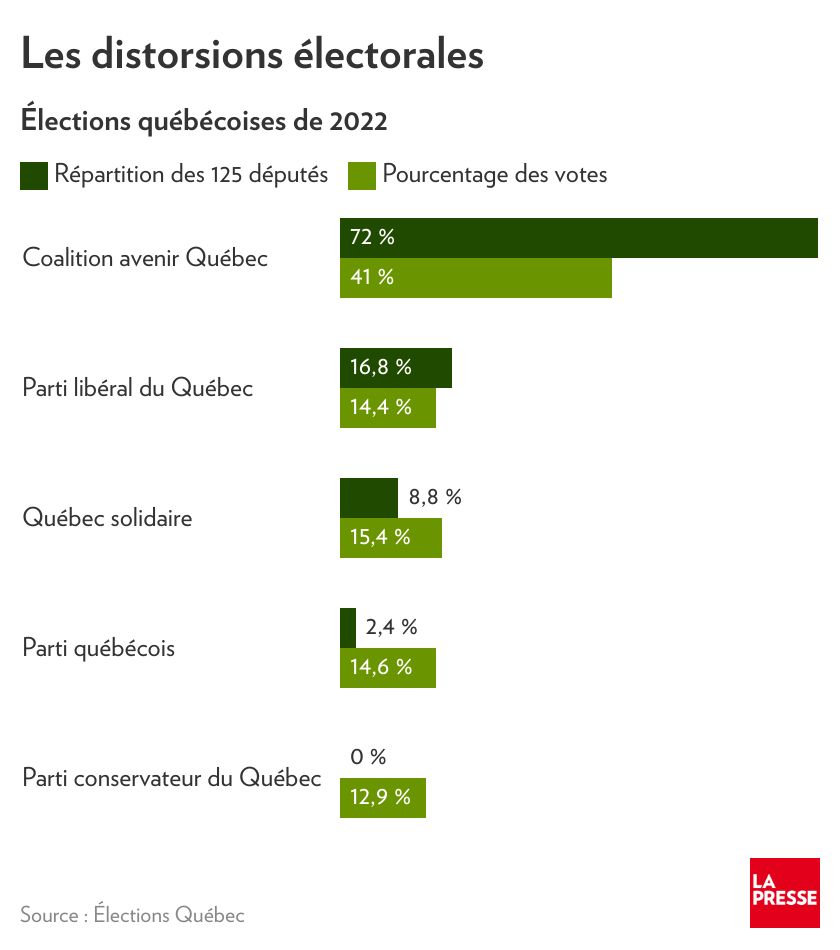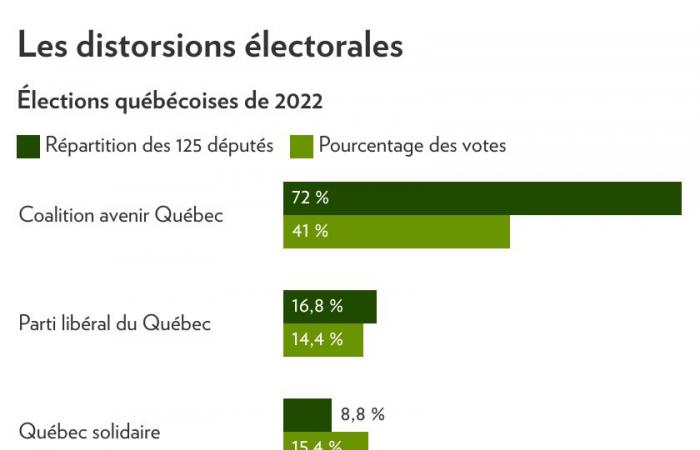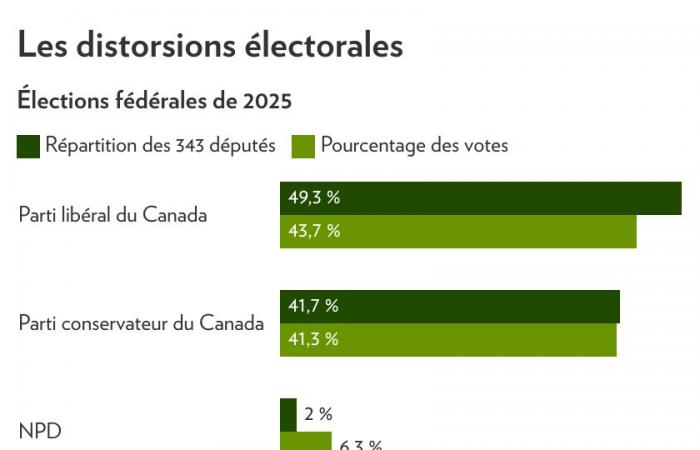In the absence of a reform of the ballot, many Canadian voters have found a way this year to have more representative elections: by voting strategically.
Posted at 6:00 a.m.
These voters did not vote this time for their favorite political party. Rather, they voted for the party they preferred between the two chances of forming the government, the Liberals and the Conservatives.
In Quebec, traditionally bloquettes were “pinched their nose” and voted for the Liberals. Throughout the country, traditionally neo-democratic voters have done the same with the liberals and the conservatives.
In a way, they acted in the minds of a preferential ballot, where we classify the parties in order of preference and where the one who prevails is often the second choice of the greatest number of voters.
When voters behave differently in times of crisis, it is a sign that we must consider a reform of the voting system.
Let us examine, with Professor Marc André Bodet, the advantages and disadvantages of our current voting system, as well as other modes that could replace it – if the elected officials ever have the courage to do so.
There is not a ballot that is the best among all, warns Marc André Bodet, professor of political science at Laval University. In fact, it depends on your goal. “Do we want a voting system with a strong mandate and accountability, or a more representative system of all voters?” »»
Majority uninominal ballot in a turn
It has always been our system in Quebec and Canada. An voter votes for a single party, and the party that obtains the most votes in a constituency wins it.
Benefits
“This voting system has served us well, because Canada remains one of the most stable countries,” says Marc André Bodet. Citizens like the simplicity of this system: whenever they have been given to change it by referendum, they kept it. Since 2005, Ontario has made a referendum on the ballot, British Columbia three. This voting system also has “tend to train majority governments with a clear mandate,” says Bodet.
Disadvantages
It can cause significant distortions in terms of representativeness, especially when there are three, four or five parties in the running as is currently the case in the federal and Quebec. In Quebec, a party can thus obtain a majority of seats with only 35 % of votes.

Proportional or mixed proportional ballot
In a proportional voting system, the seats of elected officials are allocated according to the percentage of the votes of each party. If a party obtains 20 % of the votes, it obtains 20 % of the seats.
Several countries such as Germany, Scotland and New Zealand have a mixed proportional voting system, where part of the deputies are elected by the majority of the majority in a turn and another part of the deputies are elected by proportional ballot. In 2018, four of the five parties in Quebec were committed to adopting a mixed proportional voting system, but the CAQ denied this commitment.
Benefits
It is the most representative voting system, the one where the distortions are most limited between the composition of the legislative assembly and the popular vote.
-Disadvantages
Small parties sometimes have an excessive influence, because their support is essential for a large party forms the government. Such a system can sometimes promote the emergence of parties to extremes (extreme right or extreme left). However, there is a solution to this last problem: a minimum threshold of votes (eg: 5 % or 10 %) to obtain deputies.
This system often produces coalition governments, generally more unstable.
Preferential ballot
Voters classify the parties in order of preference. The least popular parties are eliminated one by one. We then Take the second or third choice of voters who chose these parties eliminated as the first choice. We repeat the exercise until a party obtains 50 % + 1 of the votes. This system promotes centrist parties which make compromises and which can reach the most voters, often as second choice.
Benefits
It is the system that produces the most representative governments of a large part of the population.
Such a system also pacifies the electoral game. As the parties want to be the second choice of the greatest number of voters as possible, they are less attacking and “have an interest in making alliances,” says Bodet.
Ireland and Australia have been using preferential elections for over 120 years. It works very well and it gives representative governments.
Disadvantages
“As the parties will try to make sure to be the second choice as many people as possible, to win, you have to be as beige as possible,” says Marc André Bodet. It does not improve the representation of the small parties. »»
My verdict
In my opinion, our current voting system is the worst for Canada and Quebec in the circumstances. Due to our high number of parties (five), it can cause significant distortions (for example, in the Quebec elections of 2022, with 41 % of the votes, the CAQ obtained 72 % of the seats). For the federal elections of 2025, the distortions were weak because more than 80 % of the voters voted for the two main parties, a first since 1958.

A mixed proportional ballot would be a big improvement compared to our current system, but certain drawbacks (lack of representativeness) is replaced by others (less stability).

We would therefore benefit from adopting the preferential election in Canada and Quebec, especially if we consider that the objective of the elections is to elect a government representative of the greatest number of citizens possible. The preferential ballot offers an interesting compromise between stability and greater representativeness of citizens.
Are we chances to change your voting mode?
Politically, the stake seems dead and buried, after the failures of Justin Trudeau and François Legault.
But one should not despair, because 53 % of Quebecers want a reform of the voting system, against 27 % of respondents who do not want it, according to a light survey-The Montreal Journal of 2022.
Memo to the political class: that makes a lot of dissatisfied people.What do you think? Take part in the dialogue












